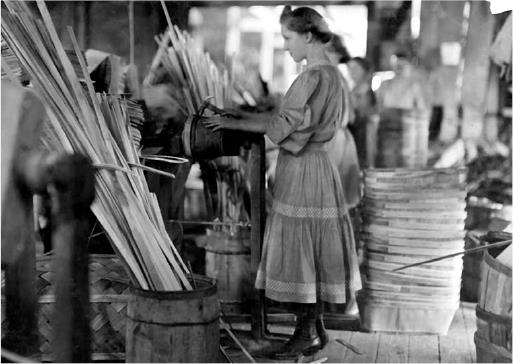Economics and BusinessTextile Industry |
How did the textile industry begin? |
The large-scale factory production of textiles began in the late 1700s, becoming established first in Great Britain, where a cotton-spinning machine was invented in 1783 by Richard Arkwright (1732–1792). Spinning mills were introduced to the United States in 1790 by English-born mechanist and businessman Samuel Slater (1768–1835). The 21-year-old had worked as a textile laborer for more than six years in an English mill where he learned the workings of Arkwright’s machine, which the British considered the cornerstone of their booming textiles industry; laws prevented anyone with knowledge of the mill from leaving the country. In 1789 Slater, determined he could recreate the spinning mill and eager to seek his own fortune, disguised himself to evade the authorities and leave the country, sailing from England for American shores. Arriving in Providence, Rhode Island, he formed a partnership with the textiles firm Almy and Brown. Slater began building a spinning mill based on the Arkwright machine. This he did from memory. The spinning mill was debuted December 20, 1790, in the village of Pawtucket, Rhode Island, where the wheels of the mill were turned by the waters of the Blackstone River. The machine was a success and soon revolutionized the American textiles industry, which previously relied on cottage workers (the putting-out system) to manufacture thread and yarn.
Slater’s innovation, which would earn him the title Father of the American Textiles Industry, spawned the factory system in the United States. By 1815 there were 165 cotton mills in New England, all working to capacity. The early mills were not large-scale, however, and for a time after Slaters’s introductions, New England mills and merchants continued to rely on homeworkers to weave threads (now produced by the mills) into cloth.
In 1813 the Boston Manufacturing Company opened the first textile factory, where laborers ran spinning and weaving machines to produce woven cloth from start to finish. The advent of machinery had given rise to the factory system. And laborers were shifted from working in their homes to working in factories. While native New Englanders continued to provide the labor for the textile industry for the next two decades, an influx of immigrants in the mid-1800s provided the hungry manufacturers with a steady supply of laborers who were willing to work for less money and longer hours. Within the first three decades of the 1800s, New England became the center of the nation’s textiles industry. The region’s ample rivers and streams provided the necessary water power, and the commercial centers of Boston and New York City readily received the finished products. Labor proved to be in ample supply as well: Since the mill machinery was not complicated, children could operate it and did. Slater hired children ages 7 to 14 to run the mill, a practice that other New England textile factories also adopted. The Jefferson Embargo of 1807, which prohibited importing textiles, also aided the industry. New England’s mills provided the model for the American factory system. Slater had brought the Industrial Revolution to America.

